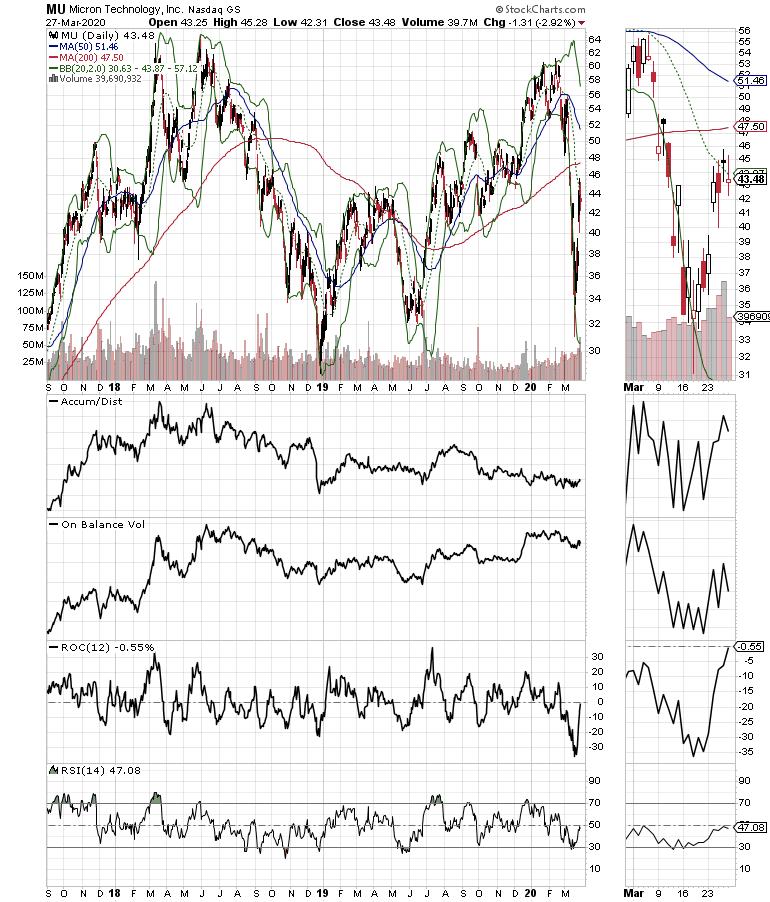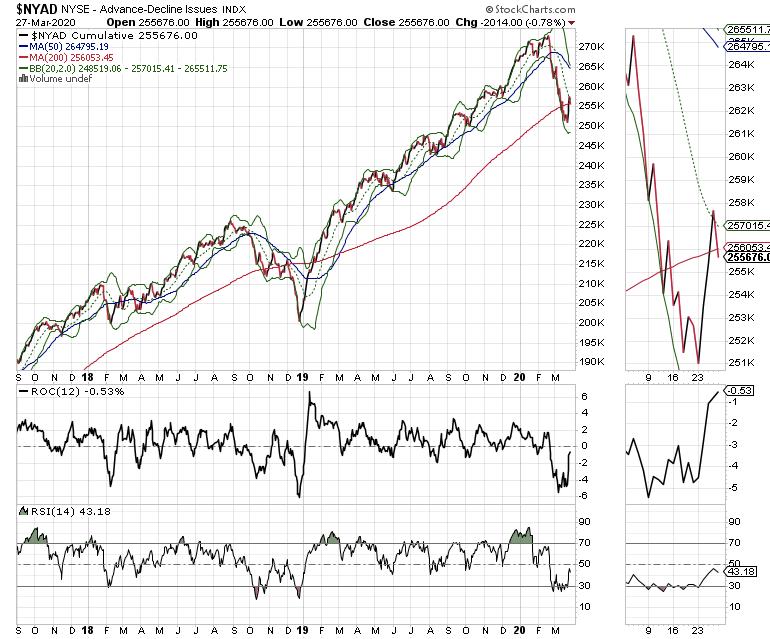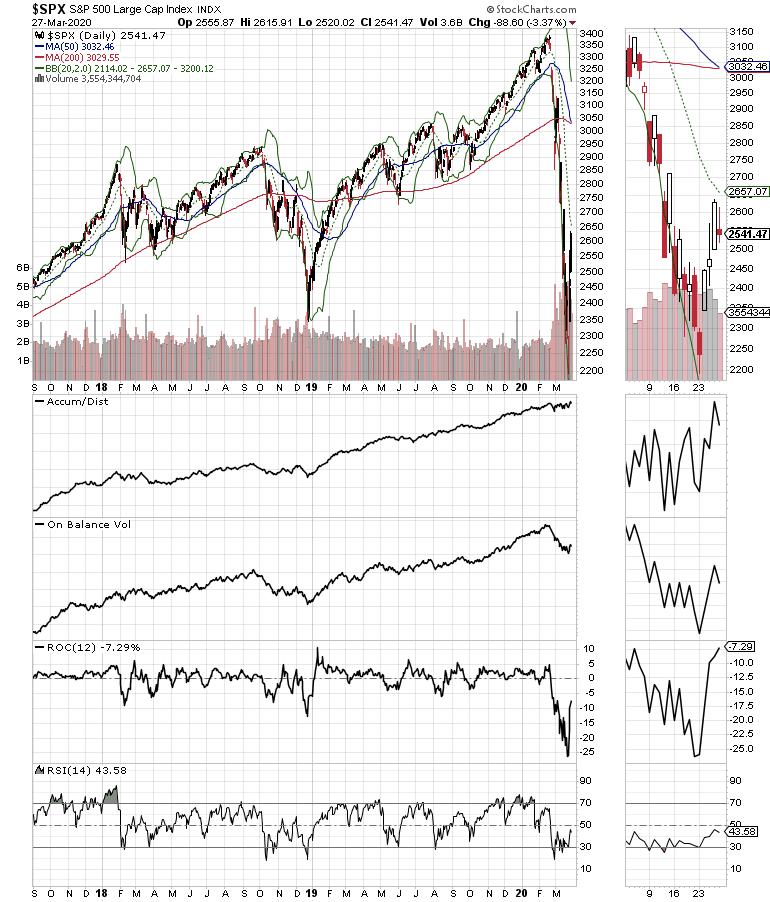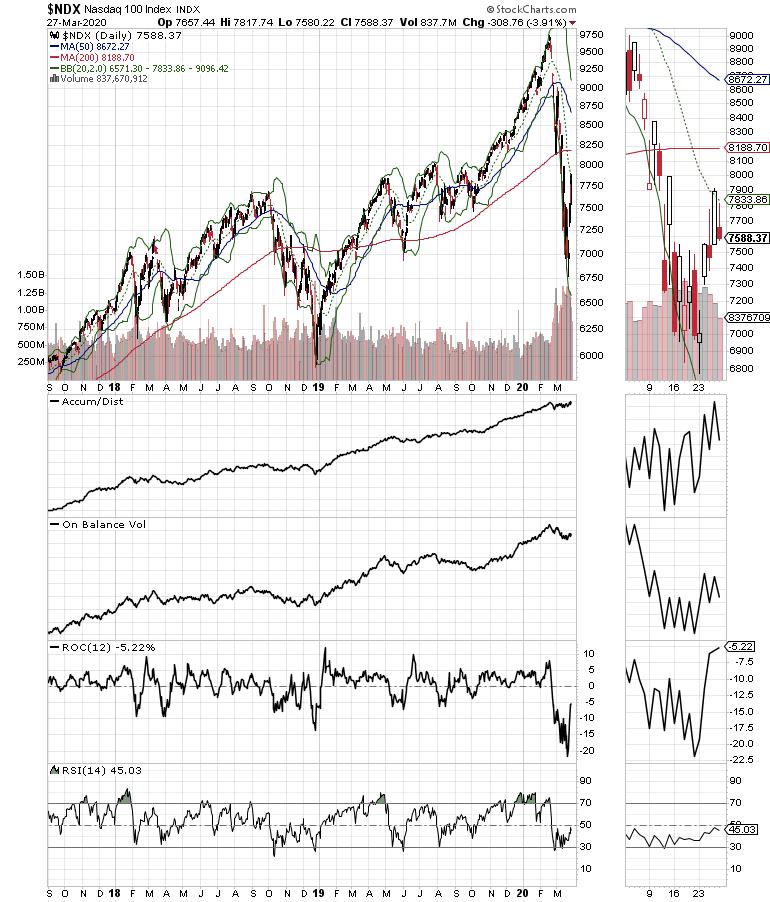After the past six weeks of bearishness, this market needs a pause. But, as we've seen over the last few weeks, by Monday morning anything is possible, especially after the NIH infectious disease chief, Dr. Anthony Fauci, told CNN that models are projecting the possibility of millions of coronavirus cases and 100-to-200 thousand deaths.
The bottom line is that, for now, the most aggressive bear market many of us have ever seen has delivered a spectacular short-term upside reversal but faces important overhead resistance. Thus, the real question is whether this is the real bottom, the beginning of a bottoming process or, worst of all, just a really good bear market rally with a new down leg coming in the next few days.
As I noted last week, and in light of Dr. Fauci's comments, waiting for the all-clear from the market is a sound strategy and our best bet. After all, no one has ever suffered financial ruin in a bear market by holding large sums of cash and avoiding losses. Moreover, it's crucial to remember that the all-clear is traditionally described as a rebound from the lows followed by a period of stability in stock prices, even a slowing in volume and actually some boring days.
So much for that; I mean what could possibly be the next act for the algos after a 35% decline in six weeks? How about a full-on bull market in just three days, followed by a fourth day which looked as if we were right back into the bear market?
Well, that's what happened, as stocks bottomed and rallied 20% in three days while global central banks flooded banks with newly-minted out-of-thin-air money as global governments dug their debt holes deeper while concocting wildly hyped fiscal stimulus packages. Certainly the algos liked the news. And I didn't mind them either, as there were some worthwhile trading opportunities during those three days – think SBUX, as I noted in this space last week.
But guess what? I still haven't gotten the all clear, which means I won't be plunking huge bucks into stocks until the dust clears; which, of course, could be anytime or in months, considering the way the market is trading on a daily basis.
Still, take a step back and think what would happen if the market can shake off Friday's decline and fully recovers the entire bear market loss in the next week or two. What would be its next move? And what would we do? Would we dance in the streets? Would we take the rest of the year off? Or would we be numb as the whole thing collapses yet again? Your guess is as good as any, which is precisely why I am still holding lots of cash and am only willing, at most, to take small risks under the right circumstances.
Taking Stock
Certainly the coronavirus and its repercussions are still the major factor affecting everyday life. But in the market it's all about liquidity - specifically, liquidity provided by central banks via asset purchases and injections of cash into the repo, bond and money markets. This point was clearly evidenced by Friday's selloff in stocks, which came in response to the Federal Reserve reducing the amount of money that it will inject into the markets on a daily basis from $75 billion to $60 billion, just a few days after saying that there were no limits to their largesse.
Moreover, since the markets, the economy, and people's lives are now one interconnected system (MEL), my bet is that some of that money will be used to repatriate production capacity from China back to the U.S., voluntarily or by force – GM, anyone? – which means that companies with domestic production capacity are likely to fare better in the long run.
Simply stated, as time passes, and purely from a survival perspective, more and more people, openly or privately, will come to the realization that the world can't take a chance on this happening again without being more prepared. This, of course, means that even as the daily grind of self quarantine, social distancing and working from home continues, people are thinking, and Complexity, the process of system adjustment and operational optimization through which the Universe evolves, is active. Indeed, decision makers across the spectrum, most importantly at home where 401(k) plans and Home Equity Lines of Credit are crucial tools of wealth, are thinking about future preparations for the next visit from the unpredictable and destructive phenomenon known as Chaos.
Moreover, after all of this is said and done, there will be some seriously pent-up demand for, well, just about everything. Indeed, the trillion dollar questions are, when it happens, what type of recovery are we likely to see? Which way will Complexity steer MEL once the current Chaos simmers down? What goods and services will be in the highest demand when all of this is over? And, more importantly, which companies will benefit the most? As I discuss below, one unlikely high tech company is unexpectedly cashing in from the current situation and is interestingly looking positively toward the future.
To learn more about how Chaos and Complexity move the markets and how to adapt this information into your daily trading routine, check out my presentation, " Trading at the Edge of Chaos" and take me up on a FREE 30-day trial offer.
Micron Technology Offers Glimpse into Future of Technology Sector
The recent rally in the shares of Micron Technology (MU) may have been a shot across the bow of the next technology revolution.
Indeed, as Wall Street analysts scramble to cut future earnings expectations and economists argue about the depths of the contraction in GDP due to the coronavirus, Micron, the global leader in flash memory, recently delivered a huge earnings beat, taking the stock nicely higher in response. Moreover, in its conference call, Micron actually gave positive guidance, citing increased demand for its chips due to the increase in online meetings.

What it means for investors is that the next big wave of technology may be about to gather steam. Certainly 5G, the buzzword before all this started, will be involved. But, as a betting man, I would suggest looking for companies in the U.S. and Europe to take over from China's domination of that market from Huawei, with Micron in the mix.
Indeed, Micron's guidance suggests that we are already seeing a critical pivot by companies and individuals to the next big wave of technology and that, over time, this will be accompanied by an acceleration of the already-significant move of production capacity away from China. And while the coronavirus situation will likely resolve at some point in the future, those new developments which have made people's lives easier during this difficult time will remain and likely flourish over time.
We are already seeing Micron benefitting from apps such as telemedicine, which I expect will increase as the population ages. This is also visible in the rise of online meetings for banking, deal making and other routine things which have up to now been done in person.
What I'm saying is that complex adaptive systems emerge and evolve. Thus, over time, thanks to the coronavirus, we are likely to see a rapid transformation of what we do and how we do it. Moreover, it will likely involve the Internet, with private online meetings and subsequent technology offshoots that evolve from this dynamic. It seems as if Micron is already there.
Oversold NYAD Rebounds
Last week, in this space, I suggested a credible bottom was possible due to the oversold state of the New York Stock Exchange Advance Decline line (NYAD). I also expressed my concerns regarding key technical indicators: the ROC for NYAD, along with the Accumulation Distribution (ADI) and On Balance Volume (OBV) indicators for the Nasdaq 100 (NDX) and S&P 500 (SPX) indexes.

And, while the subsequent rebound in NYAD and the indexes was spectacular, we could still see a reversal and a retest the lows for the cycle as early as March 30, although end-of-month seasonal tendencies for money flowing into stocks could delay any potential decline.

What we saw last week was that the market responded to the oversold RSI readings on NYAD, NDX and SPX, and the positive indicator divergence was illustrated by lower prices but not lower RSI readings. Next, the market responded to the Fed's liquidity moves instantly, clearly forecasting what will happen if the money spigot is turned off, as Friday's action showed.

Finally, and perhaps most importantly, are these crucial technical signs. The NYAD is now testing its 200-day moving average, while both NDX and SPX have overhead resistance levels coming up at their 20-day moving averages. If the market fails to rise above these key levels, convincingly, we are likely to see retests of the recent lows.
Trading Small Has been Excellent
As I've recommended for the past few weeks, trading small lots of liquid stocks has been profitable. Indeed, with many blue chip and large-cap stocks soaring to large gains on short-covering and some buying, a small amount of money, in many cases, has delivered an excellent percentage gain. Moreover, I am not changing my recommendations for now, given the potential for either a consolidation or a retest of the lows.
Meanwhile, the key to success, until proven otherwise, will be to keep cash at above-average levels while deploying enough to make some money via short-term trading in and out of liquid stocks as we wait for the market to finally reveal its true intentions. The next couple of weeks should give us a good idea as to what's next.
Joe Duarte
In The Money Options
Joe Duarte is a former money manager, an active trader and a widely recognized independent stock market analyst since 1987. He is author of eight investment books, including the best selling Trading Options for Dummies, rated a TOP Options Book for 2018 by Benzinga.com and now in its third edition, plus The Everything Investing in Your 20s and 30s Book and six other trading books.
The Everything Investing in Your 20s and 30s Book is available at Amazon and Barnes and Noble. It has also been recommended as a Washington Post Color of Money Book of the Month.
To receive Joe's exclusive stock, option, and ETF recommendations, in your mailbox every week visit https://joeduarteinthemoneyoptions.com/secure/order_email.asp.
